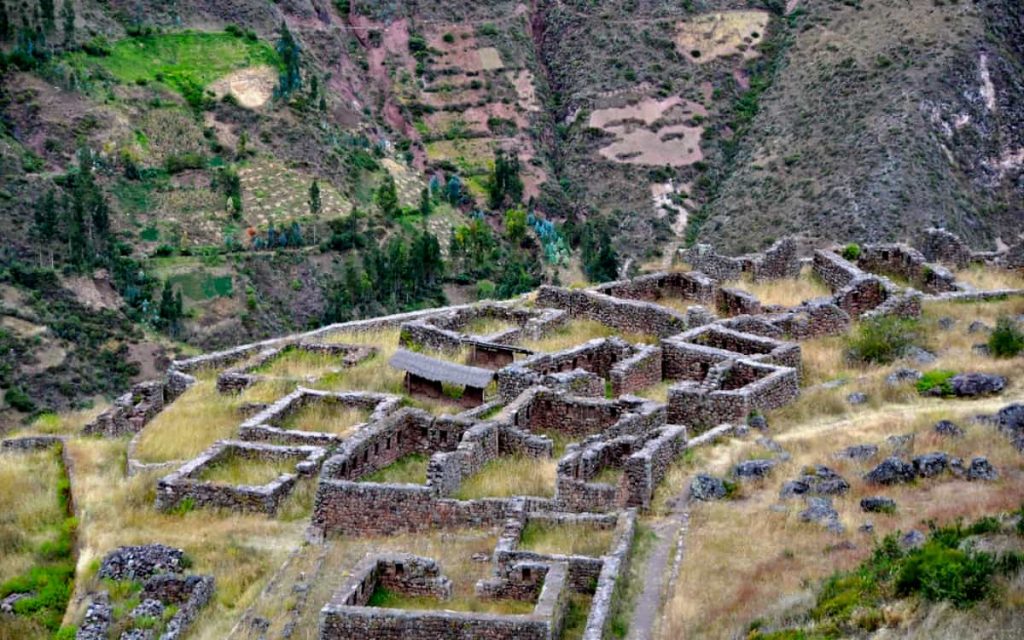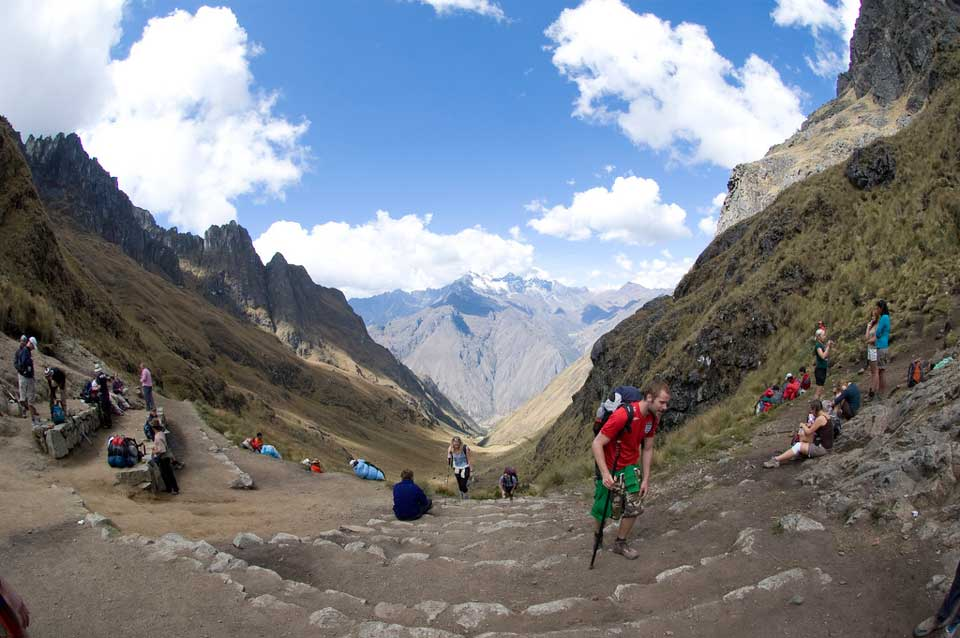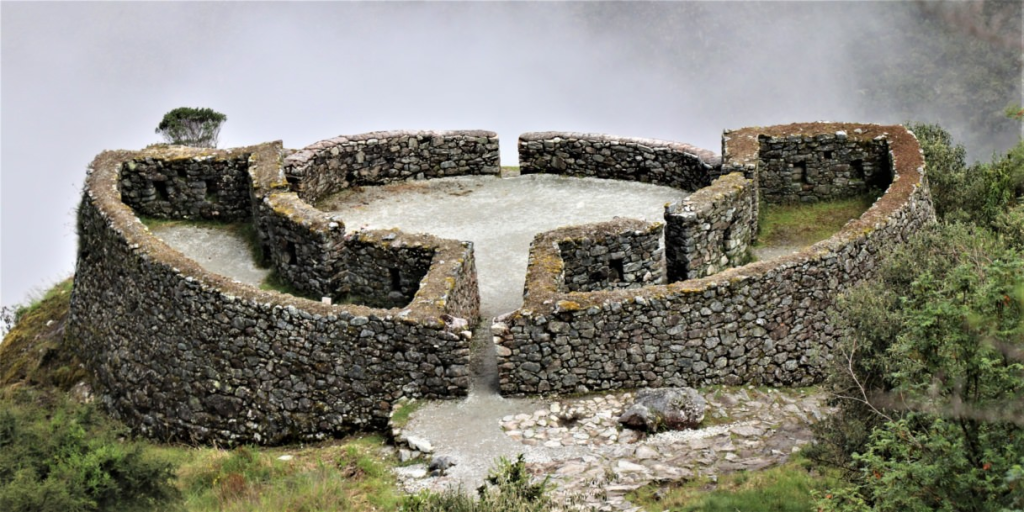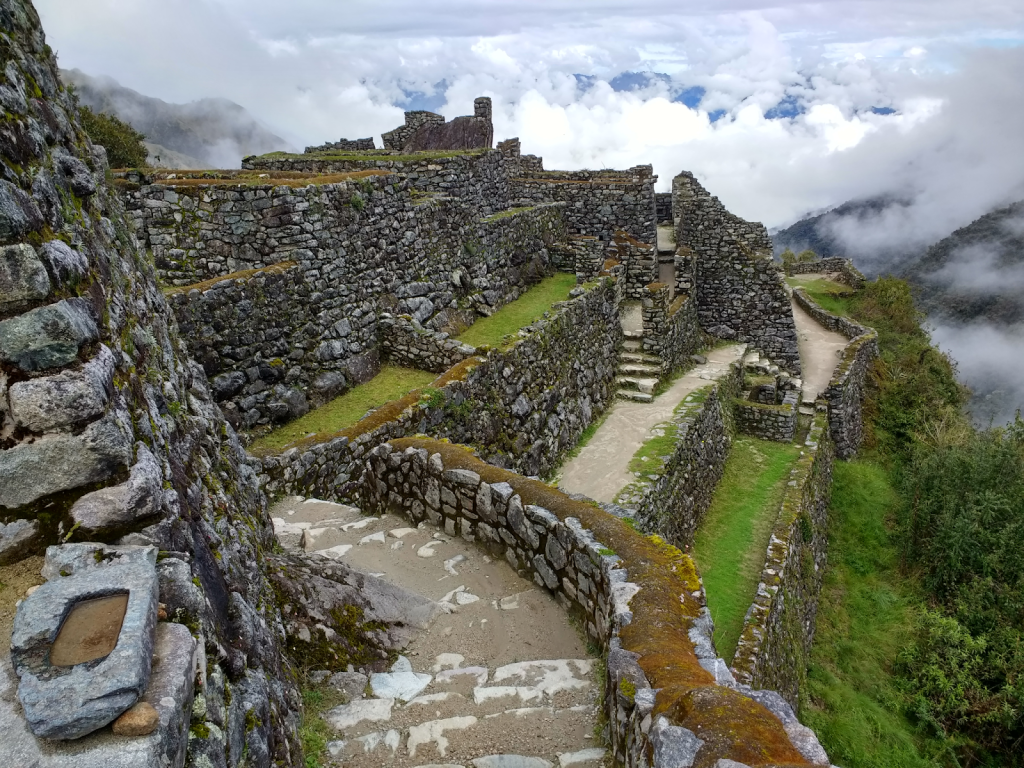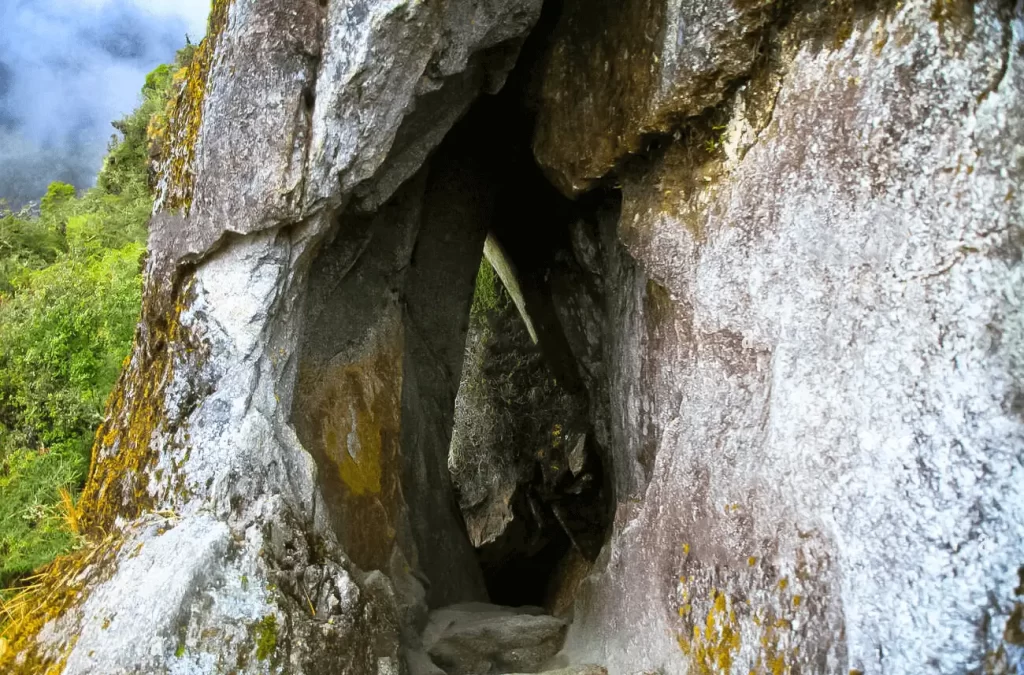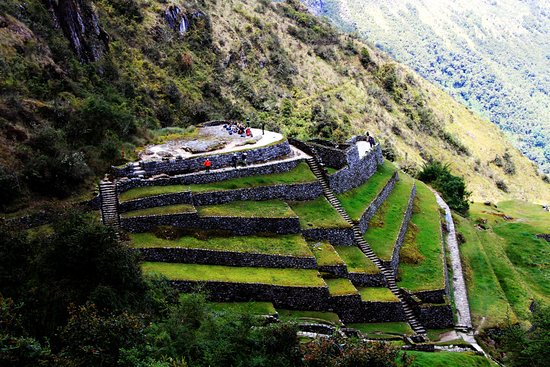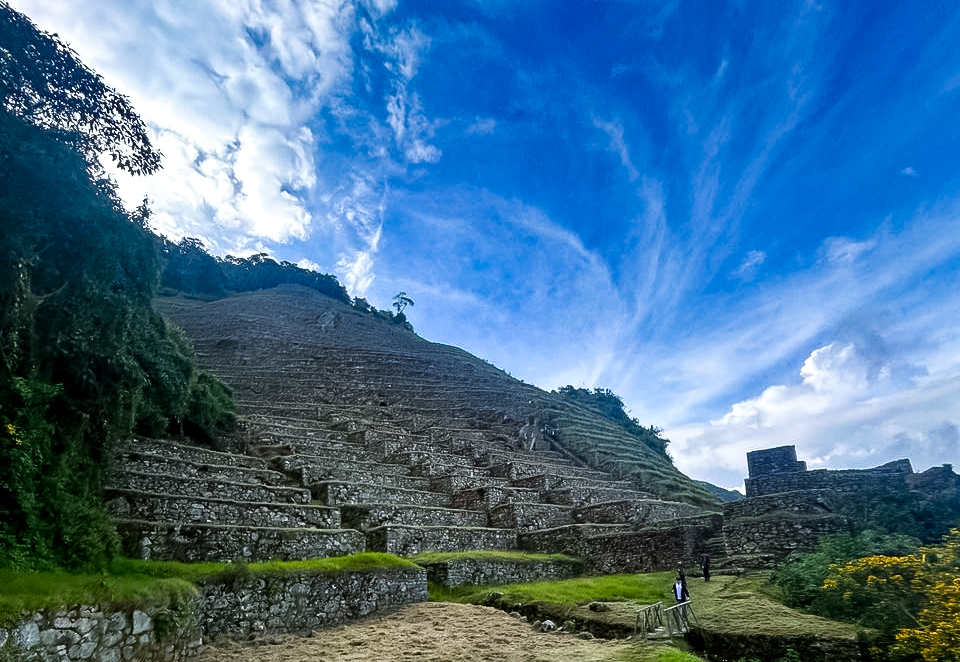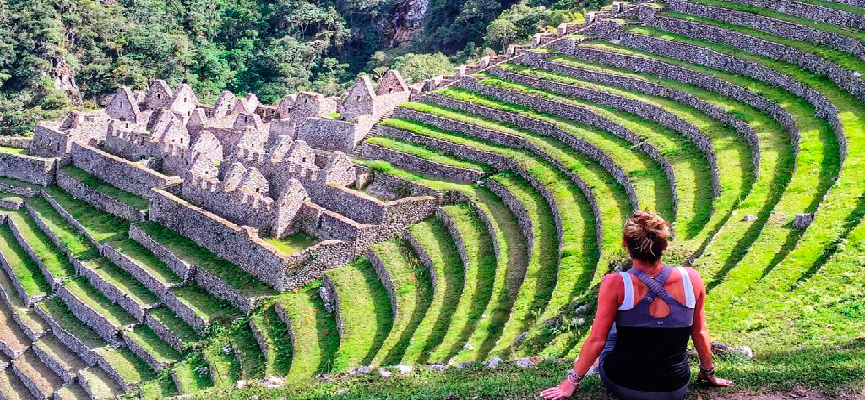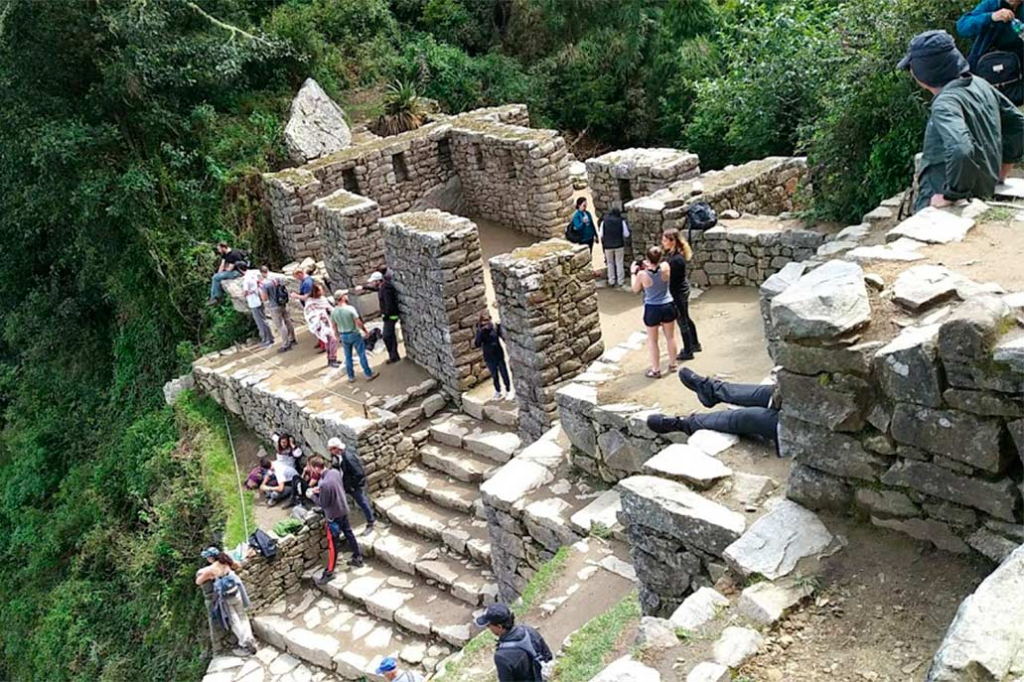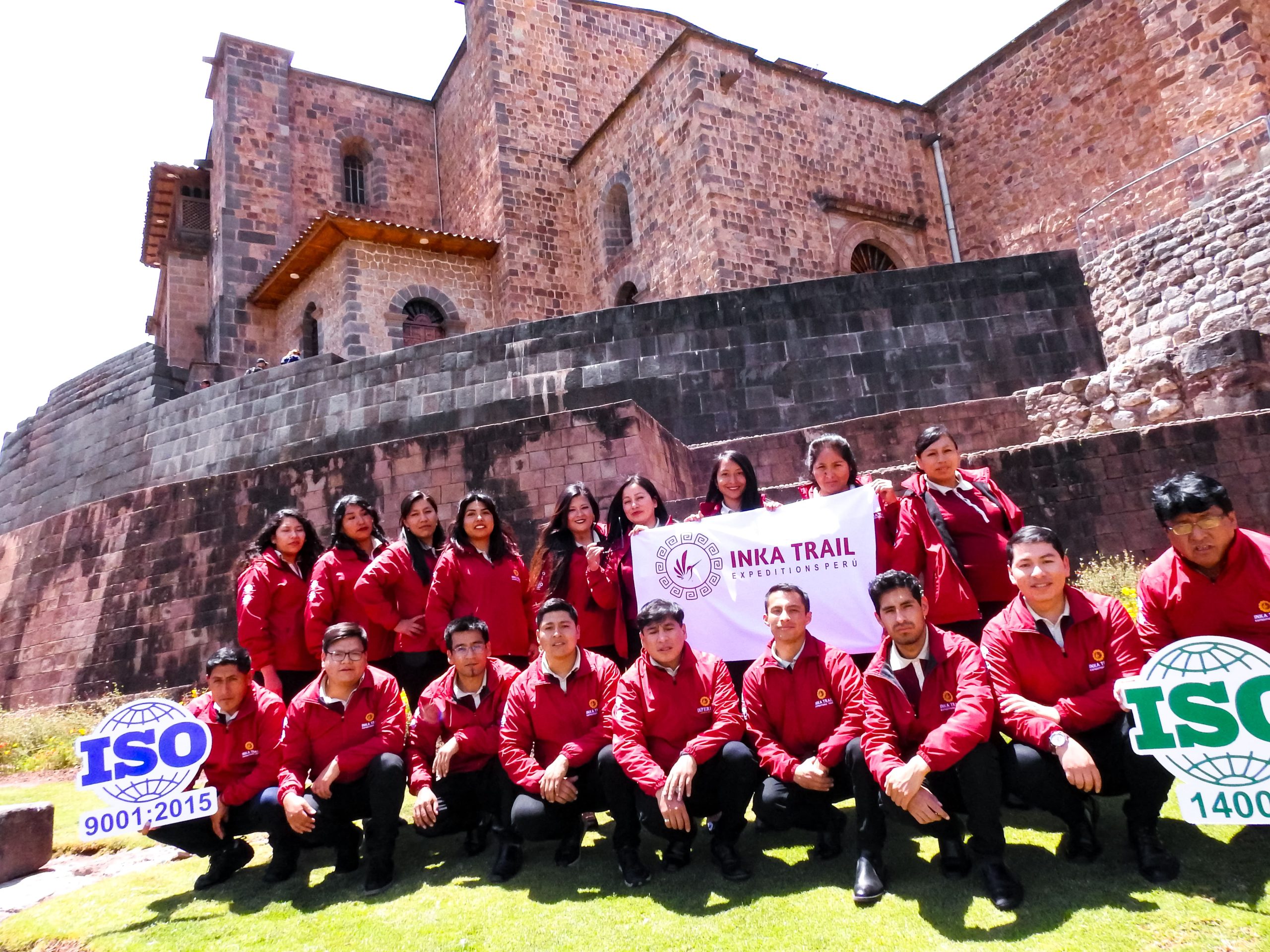More vestiges of the Inca civilization
Travelers on the Inca Trail will have the opportunity to admire numerous fascinating archaeological sites along the Inca Trail en route to the ancient citadel of Machu Picchu. For many, it is especially intriguing to witness the sunrise from Inti Punku on the morning of the fourth day, just as the Incas did in their time.
Qoriwayrachina
Llactapata
The next stop on your way is the archaeological site of Llactapata, located at an altitude of 2800 meters above sea level. It is believed that Llactapata was primarily used for agriculture. Its name, a combination of the Quechua words ‘llacta’ (village) and ‘pata’ (height), reflects its location. Although this site is located below the main trail, not all travelers take the time to visit them.
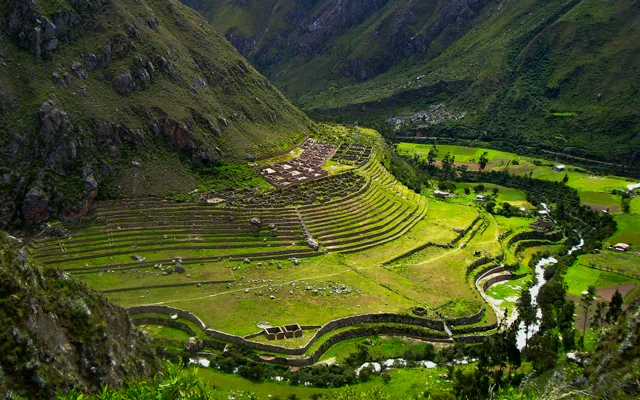
Dead Woman’s Pass
Dead Woman’s Pass, also known as ‘Warmiwañusca’ in Quechua, is renowned as one of the most iconic landmarks along the Inca Trail, despite not being an archaeological site per se. Situated at a staggering altitude of 4200 meters above sea level, the pass derives its name from its striking resemblance to a reclining woman. Upon reaching its summit, adventurers are treated to breathtaking panoramas of the majestic Salkantay and Veronika mountains. Most tour operators arrange campsites approximately 600 meters below Dead Woman’s Pass, on the opposite side at Pacaymayu.
Runkurakay
Encountered after the third pass on the third day, presents visitors with the ruins of two concentric walls enclosing chambers and a courtyard. These inclined walls suggest resilience against seismic activity, leading archaeologists to believe Runkurakay served as a ‘tambo’ – a crucial resting point for couriers en route to Machu Picchu, equipped with numerous sleeping quarters and stabling facilities for pack animals.
Sayacmarca
meaning ‘Inaccessible Town’ in Quechua, lives up to its name with steep drops on three sides plunging into the dense jungle below. Accessing the ruins requires ascending 98 vertical stone steps along a mountain edge at an elevation of 3600 meters above sea level, a feat not recommended for the faint-hearted.
Beyond Sayacmarca, the landscape along the Inca Trail undergoes a transformation as adventurers venture into the tropical cloud forest, an integral part of Peru’s Amazon jungle, adorned with vibrant orchids and exotic flora.
Inca Tunnel
is more of a geographical feature than a conventional ruin. Encountered before the third pass along the trail, it becomes evident why it exists: the solid rock obstructing the path leaves no alternative route. This segment includes a raised causeway over marshy terrain, a meticulously carved tunnel through rock, and notches in the cliff face facilitating ascent. The remarkable aspect lies in the Inca’s ability to craft such structures with rudimentary tools, leaving the method of their construction still shrouded in mystery.
Phuyupatamarka
meaning ‘the cloudy place’ in Quechua, is accessible via a descent down a lengthy staircase. This splendid site comprises six cascading fountains, Andean terraces, and a pair of plazas surrounded by numerous buildings. Archaeologists speculate that Phuyupatamarka once accommodated hundreds of inhabitants simultaneously.
Intipata
A name coined by a recent expedition member, Intipata translates to “Sunny Slope” due to its abundance of terraces and absence of plazas, religious edifices, or fortifications. Situated several hours away from Machu Picchu and off the traditional Inca Trail, it is one of the lesser-known archaeological sites along the Inca Trail. Its strategic location suggests it may have served as a means to relay messages swiftly to the mountain city. Intipata also offers advantageous viewpoints overlooking Choquesuysuy, with numerous lookout platforms scattered throughout the ruins.
Wiñay Wayna
dubbed ‘Forever Young’, owes its name to the presence of a unique Pink Orchid flourishing in the vicinity. Like Intipata, this structure is perched upon a steep hillside, offering a strategic vantage point overlooking a critical access point along the Urubamba River.
Characterized by well-constructed edifices, including intricately carved stone buildings and an elaborate fountain and bathing system, Wiñay Wayna suggests it may have served as a final purification site before reaching Machu Picchu.
Adjacent to Wiñay Wayna lies a museum and garden showcasing the flora and fauna indigenous to this segment of the Inca Trail, boasting an impressive array of orchids rivaling collections found elsewhere in the world.
Inti Punku
the Sun Gate at Machu Picchu, marks the culmination of the fourth and final day of the Inca Trail journey, commencing before daybreak. Providing breathtaking vistas of the enchanting city of Machu Picchu, reaching Inti Punku is an unforgettable experience.

